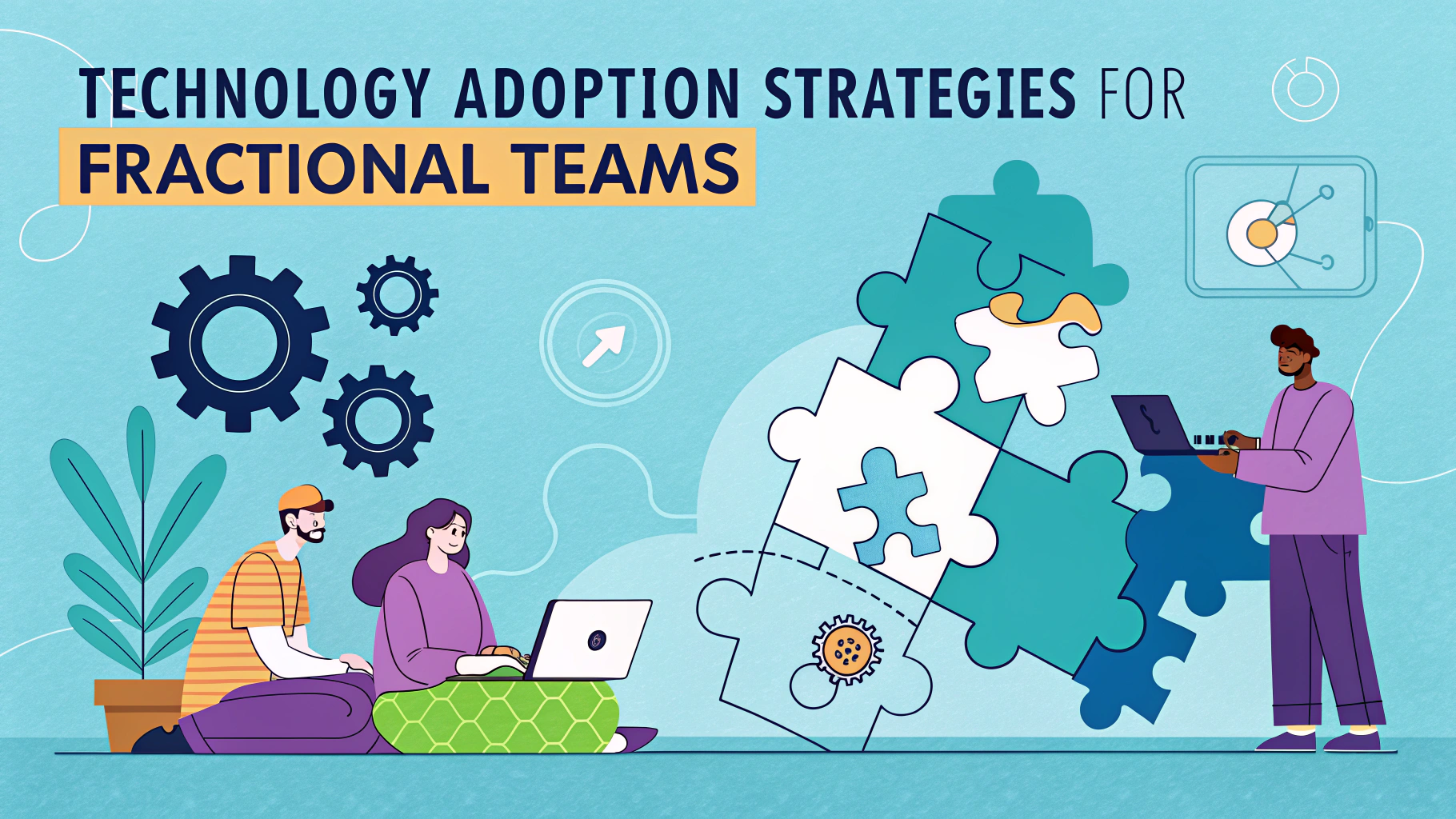Strategic decision-making shapes the success of fractional operations, particularly for COOs who must balance multiple client needs while maintaining operational excellence.
Fractional COOs face unique challenges in allocating resources, implementing systems, and driving growth across various organizations simultaneously.
This guide outlines practical approaches to making effective strategic decisions in fractional operations, helping fractional COOs navigate complex business environments.
Key Decision-Making Areas for Fractional COOs
- Resource allocation across client portfolios
- Technology stack implementation
- Team structure and delegation
- Performance metrics selection
- Process standardization
Data-Driven Decision Framework
Each strategic decision should be supported by measurable data points and clear success metrics.
| Decision Type | Key Metrics | Evaluation Timeline |
|---|---|---|
| Resource Allocation | ROI, Utilization Rate | Monthly |
| Process Changes | Efficiency Gains, Cost Savings | Quarterly |
| Technology Investment | Adoption Rate, Performance Improvement | Bi-annual |
Risk Management Strategies
Implement a structured risk assessment process for each client engagement.
- Short-term risks: Cash flow, resource conflicts, timeline delays
- Medium-term risks: Market changes, competitive pressure, scaling challenges
- Long-term risks: Strategic alignment, sustainability, growth limitations
Client Portfolio Management
Develop a balanced portfolio approach to manage multiple client relationships effectively.
- Set clear boundaries and expectations
- Create standardized onboarding processes
- Establish communication protocols
- Define emergency response procedures
Technology Stack Optimization
Select and implement scalable tools that support multiple client operations.
- Project Management: Asana, Monday.com, or ClickUp
- Communication: Slack, Microsoft Teams
- Document Management: Google Workspace, Microsoft 365
- Analytics: Tableau, Power BI
Setting Up for Success
Create a standardized decision-making checklist for evaluating new opportunities and changes.
- Assess resource availability
- Evaluate strategic fit
- Calculate potential ROI
- Consider implementation timeline
- Review risk factors
Taking Action: Next Steps
Begin implementing these strategies by focusing on one area at a time, measuring results, and adjusting as needed.
For professional guidance on fractional COO services, contact organizations like CEO x CEO or the COO Alliance.
Remember to document decisions and outcomes to build a knowledge base for future reference and continuous improvement.
Team Development and Leadership
Building and managing high-performing teams across multiple client engagements requires strategic approaches to leadership and development.
- Establish clear roles and responsibilities
- Implement cross-training programs
- Create mentorship opportunities
- Develop succession plans
Performance Monitoring Systems
Client Success Metrics
- Revenue growth
- Operational efficiency
- Customer satisfaction
- Team productivity
Internal Operations Metrics
- Resource utilization
- Project completion rates
- Client retention
- Team satisfaction
Continuous Improvement Framework
Implement systematic approaches to organizational learning and development.
- Regular performance reviews
- Client feedback integration
- Process optimization
- Knowledge management systems
Driving Strategic Success
Success in fractional COO roles depends on balancing strategic vision with tactical execution across multiple organizations.
- Maintain focus on long-term objectives while managing daily operations
- Build scalable systems that support growth
- Foster collaborative relationships with stakeholders
- Stay adaptable to changing business environments
By implementing these strategies systematically and maintaining a data-driven approach, fractional COOs can create sustainable value for their client organizations while building robust operational frameworks for long-term success.
FAQs
- What is a Fractional COO and how does it differ from a full-time COO?
A Fractional COO is a part-time executive who provides operational leadership to multiple organizations, typically working a set number of hours per month. Unlike a full-time COO, they bring diverse industry experience and cost significantly less while delivering high-level strategic guidance. - How do Fractional COOs make strategic decisions across multiple client organizations?
Fractional COOs prioritize decisions based on each organization’s specific needs, using structured frameworks, data analysis, and established KPIs. They maintain clear communication channels and documentation systems to ensure consistent decision-making across different clients. - What are the key responsibilities of a Fractional COO in strategic decision making?
Key responsibilities include operational strategy development, process optimization, team alignment, performance metrics establishment, resource allocation, risk management, and implementing systems for sustainable growth. - How does a Fractional COO balance short-term operational needs with long-term strategic goals?
They create hierarchical decision-making frameworks that categorize initiatives by urgency and impact, implement tracking systems for both immediate and long-term objectives, and regularly review progress against strategic milestones. - What metrics should a Fractional COO focus on when making strategic decisions?
Key metrics include operational efficiency ratios, customer satisfaction scores, employee productivity measures, cash flow metrics, process cycle times, quality indicators, and return on investment for strategic initiatives. - How do Fractional COOs ensure continuity in decision-making when they’re not physically present?
They establish clear standard operating procedures, implement robust documentation systems, develop decision-making frameworks for team members, and maintain regular virtual communication channels with key stakeholders. - What technology tools do Fractional COOs typically use for strategic decision making?
Common tools include project management software (like Asana or Monday.com), business intelligence platforms, data analytics tools, communication platforms (Slack, Teams), and enterprise resource planning (ERP) systems. - How do Fractional COOs align multiple stakeholders when making strategic decisions?
They conduct regular stakeholder meetings, create clear communication channels, develop consensus-building processes, establish decision-making matrices, and maintain transparency in strategic planning and execution. - What risk management strategies do Fractional COOs employ in decision making?
They implement risk assessment frameworks, develop contingency plans, conduct scenario planning, maintain risk registers, and establish early warning systems for potential operational issues. - How do Fractional COOs measure the success of their strategic decisions?
They track specific KPIs, conduct regular performance reviews, measure ROI on initiatives, gather stakeholder feedback, and analyze both quantitative and qualitative outcomes against predetermined goals.







